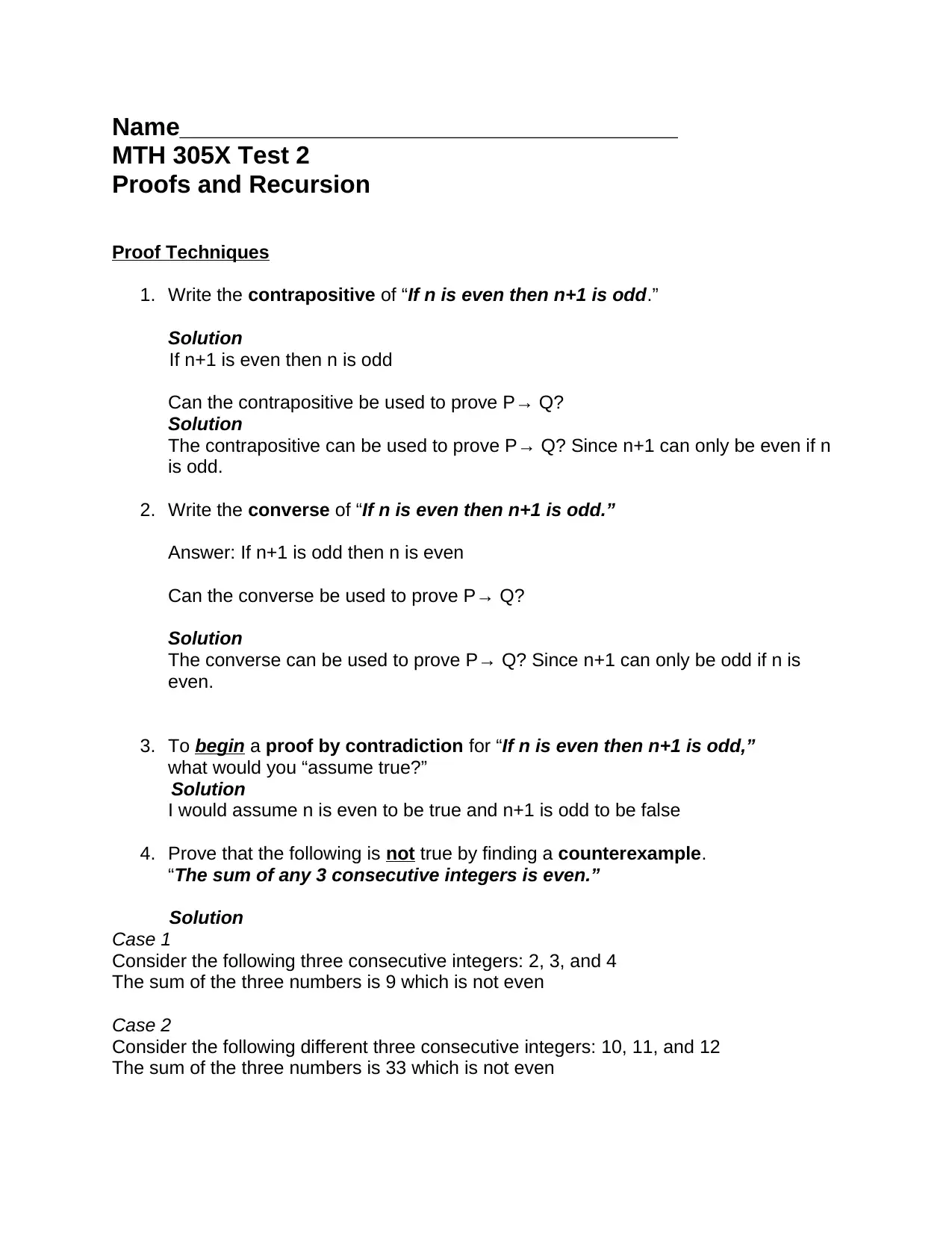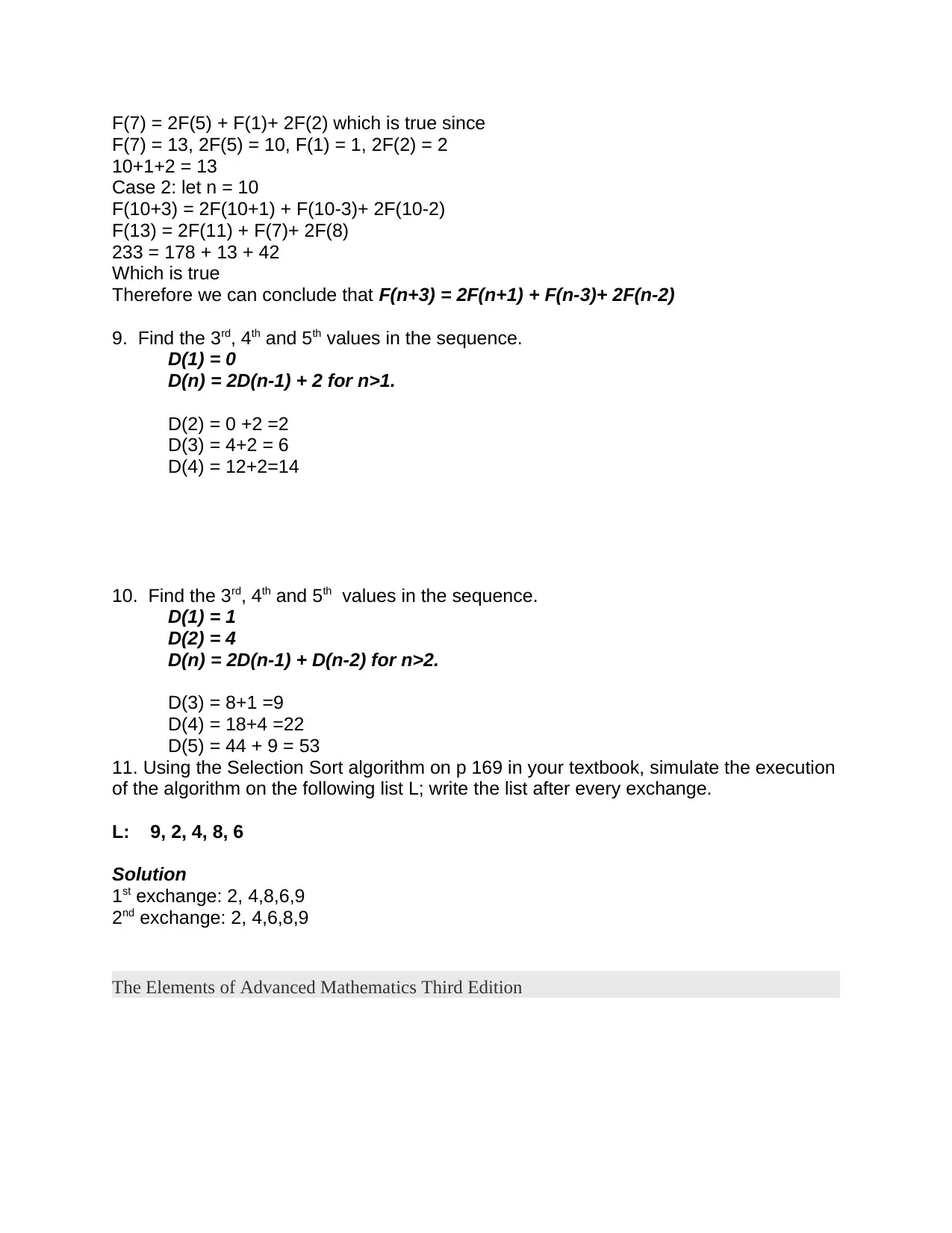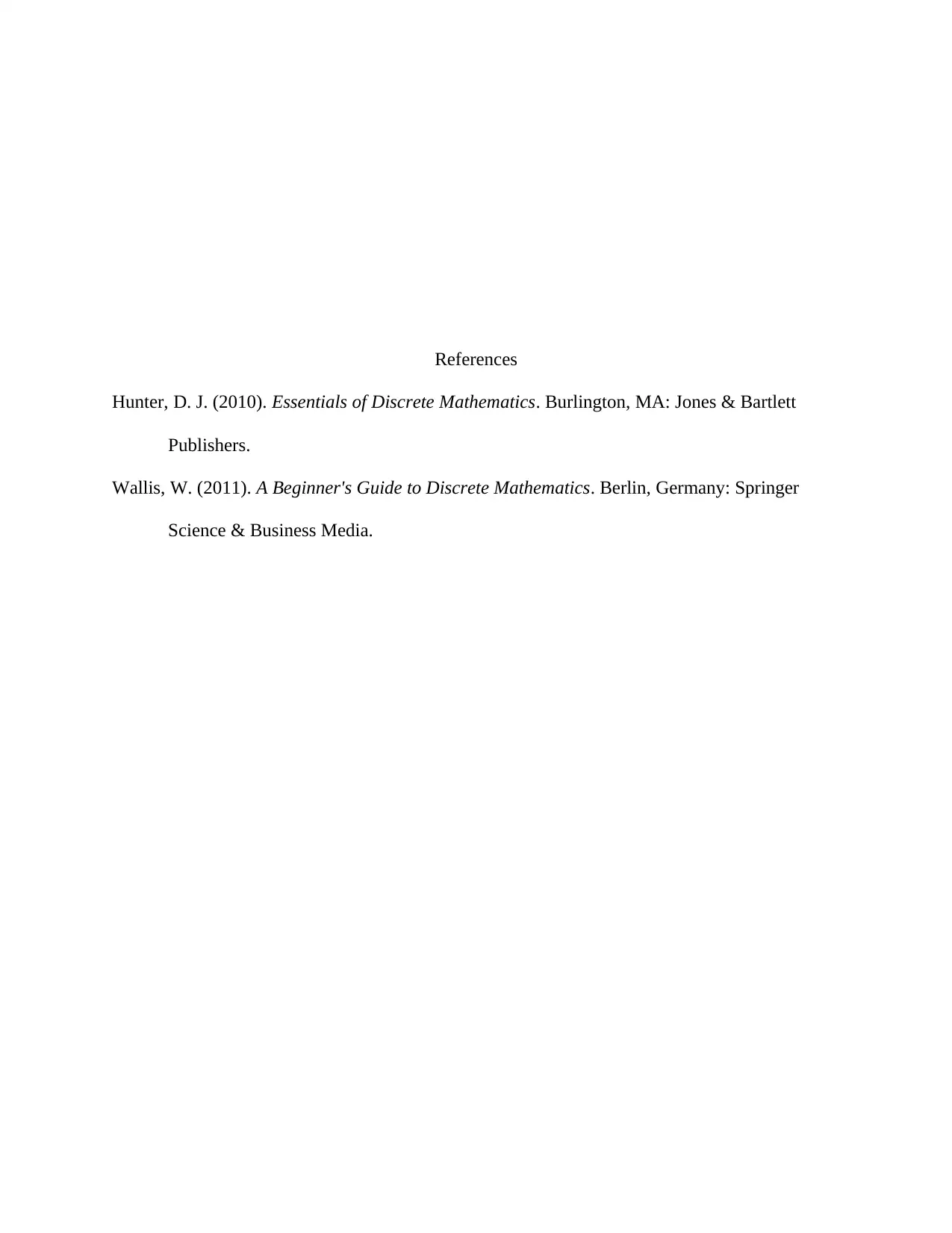Proofs and Recursion - MTH 305X Test 2
VerifiedAdded on 2022/11/15
|4
|993
|430
AI Summary
This document covers proof techniques and recursive definitions. It includes examples and solutions for contrapositive, converse, proof by contradiction, proof by exhaustion, and Fibonacci sequence.
Contribute Materials
Your contribution can guide someone’s learning journey. Share your
documents today.
1 out of 4
![[object Object]](/_next/static/media/star-bottom.7253800d.svg)









